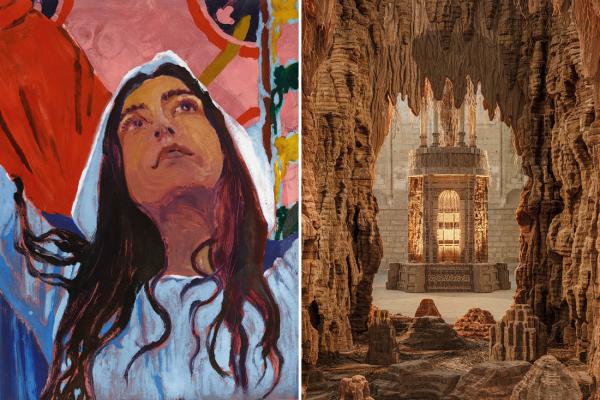Votre panier est vide
Besoin d'inspiration ?
Rendez-vous dans le programme en ligne du GrandPalais
Article -

The development of art with a social function
This art very quickly developed using many different media: painting and engraving on the walls of caves, stone and ivory sculpture, clay modelling, terracotta decoration, etc… Art fulfilled three essential functions. Firstly a religious function: art reflected belief systems which made a clear distinction between male and female (female idols with exaggerated characteristics, probably venerated for their fertility powers), and designated the locations of ceremonial practice (large megalithic centres) which remain largely unknown today. Secondly an ostentatious function: its representations exalt the physical strength of hunters, then of warriors, and above all, as jewellery art flourished, the first symbols of individual identity appeared. Finally, its aesthetic function is particularly visible in the careful decorations which cover normal everyday objects (mainly crockery) and which also function as symbolic markers organizing society.
The emergence of sumptuous art
During this long period, two main periods can be identified. Firstly, the Stone Age comprises the Palaeolithic (age of dressed stone; period of hunter gatherers) and the Neolithic (age of polished stone; emergence of agriculture and livestock farming). Secondly, the age of metals, which includes the Copper Age (known as the Chalcolithic), the Bronze Age and the Iron Age. At the same time as the emergence of metals, protohistory (a phase during which a culture or civilization has not yet developed writing, but other cultures have already noted its existence in their own writings) was characterized by a growing social structure. At the same time, an increased hierarchy of power, the development of an advanced economy and the earliest settlements emerged. This period also saw the emergence of Barbarian princes who supported the establishment of trading networks with ancient cities in the Mediterranean world. In particular, these supported the production of sumptuous art used to promote power, of which many examples of jewellery have survived, intended to enhance the prestige of leaders and sometimes celebrate gods.
Votre panier est vide
Besoin d'inspiration ?
Rendez-vous dans le programme en ligne du GrandPalais
See content : In the fantastic world of Eva Jospin: 8 questions for the artist

Article -
At the Grand Palais, Eva Jospin's "Grottesco" exhibition offers a timeless journey. Mysterious caves, sculpted nymphaea, petrified forests and "embroidered tableaux" come together to form a world apart. In this interview, the artist reveals her sources of inspiration, her relationship with cardboard and embroidery, and the way she turns each viewer into an explorer of her fantastical landscapes.
See content : Mickalene Thomas at the Grand Palais: an ode to love and black beauty!

Mickalene Thomas, Afro Goddess Looking Forward, 2015
Article -
It’s happening today! The exhibition All About Love opens its doors. With flamboyant portraits, self-assured bodies and bold expressions of femininity, Mickalene Thomas celebrates the beauty of Black women at the Grand Palais. A joyful and committed...
See content : It's open! Eva Jospin and Claire Tabouret: two new exhibitions at the Grand Palais

Article -
Until March 15, you're invited to explore the fascinating worlds of Eva Jospin and Claire Tabouret, presented in two Grand Palais galleries linked by the same entrance.